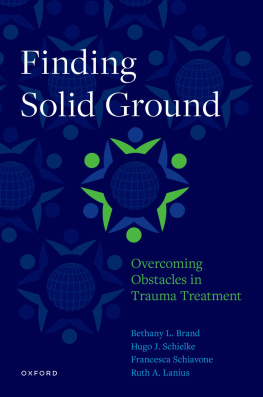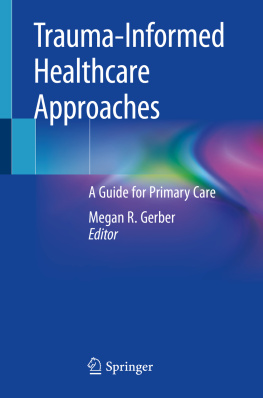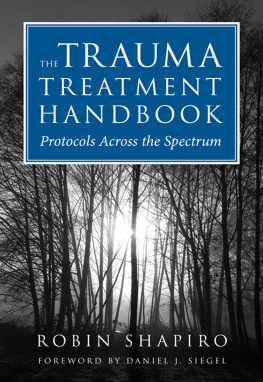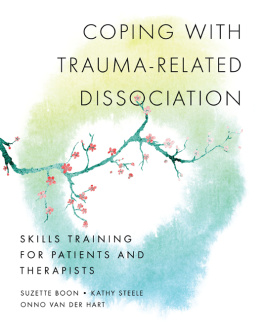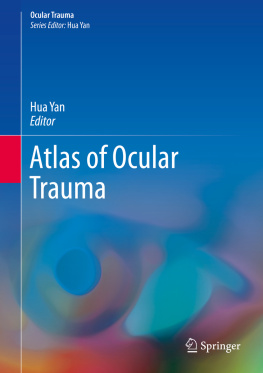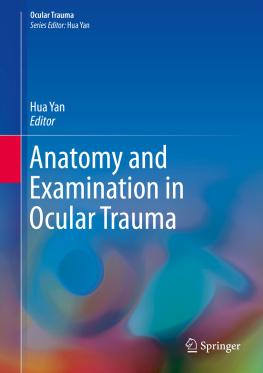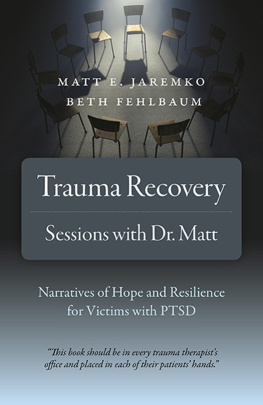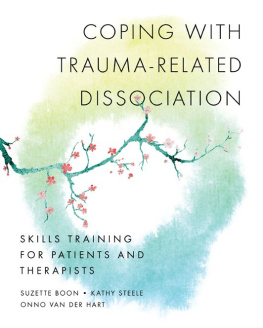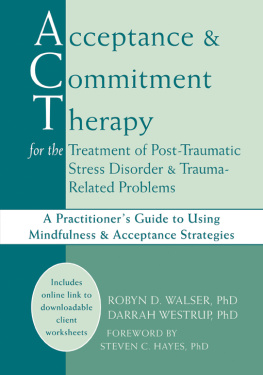Cardiopulmonary Physiotherapy in Trauma
An Evidence-based Approach
Cardiopulmonary Physiotherapy in Trauma
An Evidence-based Approach
Editors
Heleen van Aswegen
Department of Physiotherapy, University of the Witwatersrand, Johannesburg, South Africa
Brenda Morrow
Department of Paediatrics and Child Health, University of Cape Town, South Africa

Published by
Imperial College Press
57 Shelton Street
Covent Garden
London WC2H 9HE
Distributed by
World Scientific Publishing Co. Pte. Ltd.
5 Toh Tuck Link, Singapore 596224
USA office: 27 Warren Street, Suite 401-402, Hackensack, NJ 07601
UK office: 57 Shelton Street, Covent Garden, London WC2H 9HE
Library of Congress Cataloging-in-Publication Data
Cardiopulmonary physiotherapy in trauma : an evidence-based approach / edited by
Heleen van Aswegen, Brenda Morrow.
p. ; cm.
Includes bibliographical references and index.
ISBN 978-1-78326-651-7 (hardcover : alk. paper)
I. Van Aswegen, Heleen, editor. II. Morrow, Brenda, 1973 , editor.
[DNLM:1. Wounds and Injuries--therapy. 2. Heart Diseases--therapy. 3. Physical Therapy Modalities. 4. Respiratory Tract Diseases--therapy. 5. Wounds and Injuries--complications. WO 700]
RE831
617.7'13--dc23
2015005248
British Library Cataloguing-in-Publication Data
A catalogue record for this book is available from the British Library.
Copyright 2015 by Imperial College Press
All rights reserved. This book, or parts thereof, may not be reproduced in any form or by any means, electronic or mechanical, including photocopying, recording or any information storage and retrieval system now known or to be invented, without written permission from the Publisher.
For photocopying of material in this volume, please pay a copying fee through the Copyright Clearance Center, Inc., 222 Rosewood Drive, Danvers, MA 01923, USA. In this case permission to photocopy is not required from the publisher.
Typeset by Stallion Press
Email:
Printed in Singapore
Contents
Written by H. van Aswegen
Written by B.M. Morrow
Written by H. van Aswegen and B.M. Morrow
Written by B.M. Morrow and H. van Aswegen
Written by H. van Aswegen, B.M. Morrow and E. van Aswegen
Written by S. Hanekom, M. Wilson, B.M. Morrow and H. van Aswegen
Written by N. Plani, H. van Aswegen and B.M. Morrow
Written by W. Mudzi, H. van Aswegen and B.M. Morrow
Written by R. Roos, B.M. Morrow and H. van Aswegen
Written by H. van Aswegen
Preface
Trauma in its various forms remains a serious public health problem worldwide and is the leading cause of death among adults and children, particularly those between the ages of one and nine years. The Global Status Report on Road Safety (2009) states that 2050 million people worldwide sustain injuries related to motor vehicle accidents annually. The Global Burden of Armed Violence (2011) reported that 526,000 people worldwide lose their lives due to violence each year and that many more people suffer from a range of physical and mental health problems due to violence. According to the World Health Organisation (2014), the majority of trauma occurs in low-income and middle-income countries. Burns, sustained as a result of interpersonal violence or suicidal attempt, remain a serious public health problem in some countries, and fire-related deaths rank among the 15 leading causes of death worldwide. Motor vehicle accidents and war injuries are among the top ten projected leading causes of disability-adjusted life years in 2020. In light of these facts, trauma-related injuries are likely to remain one of the leading causes of high hospital admission rates and health care costs associated with care provided to patients in acute care settings worldwide.
For the purpose of this book, trauma is defined as damage to any body part as a result of physical impact or accident. Such injuries can range from mild (not requiring hospitalisation) to life threatening. The interdisciplinary health care team usually involved in the management of patients who have sustained life-threatening trauma-related injuries includes physiotherapists who work in the acute care and rehabilitation settings. In the acute care setting (intensive care unit, high care unit, hospital ward), the main roles of the physiotherapist are the prevention or management of respiratory complications or existing respiratory conditions and the prevention of musculoskeletal complications that may develop secondary to injury and immobility. This book has been written by physiotherapists for physiotherapists and physiotherapy students to encourage evidence-based cardiopulmonary physiotherapy management of adult and paediatric survivors of trauma in the acute care setting. The elements of evidence-based clinical practice are often described as a combination of: (a) best available research evidence; (b) professional expertise and judgement; and (c) the needs and preferences of the patient. In this book, information obtained from published research is shared with the reader as well as the clinical expertise of the writers in cases where evidence to support the use of certain treatment interventions in the management of patients with trauma is still lacking.
This book provides information on physiological responses to trauma to provide the physiotherapist with a better understanding of the mechanisms behind muscle protein breakdown and weakness and delayed recovery, so often observed in patients who suffer critical illness due to trauma-related injuries. A chapter that describes the anatomical differences between children and adults is included to demonstrate that children are not just small adults and illustrates how their management differs. Immunosuppressive diseases such as human immunodeficiency virus (HIV) and acquired immunodeficiency syndrome (AIDS) are prevalent worldwide; the chapter on trauma and immunosuppressive diseases describes the pulmonary and extrapulmonary complications associated with HIV and AIDS and antiretroviral therapy, and highlights important points to be considered in the management of patients with HIV or AIDS who are involved in trauma. This is followed by a chapter that provides an overview of various cardiopulmonary physiotherapy treatment interventions, subjective and objective markers and outcome measures that may be used in the care of patients with traumatic injury. The clinical chapters are dedicated to specific types of life-threatening trauma commonly encountered in patients in the acute care setting. These chapters are structured in a similar format and include: an overview of causes and mechanisms of injury; medical and surgical management; physiotherapy treatment aims; suggested treatment interventions; contraindications and precautions to physiotherapy intervention; and clinical case scenarios and suggested further reading. Differences in management between adults and children involved in trauma are highlighted. Towards the end of the book, quality of life of patients who survived trauma is discussed, as well as the role of exercise therapy to aid such survivors recovery. Key messages boxes, which contain important clinical information for the reader to be aware of, appear throughout many of the chapters.
The focus of this book is mainly on the physiotherapy treatment of adults, children and infants with trauma-related injuries in the acute care setting. The reader is referred to other published medical, physiological and physiotherapy texts for detailed information on the assessment of patients in the acute care setting. The reader is also referred to other published physiotherapy texts for detailed information on rehabilitation of trauma survivors in the chronic health care setting.
Next page

